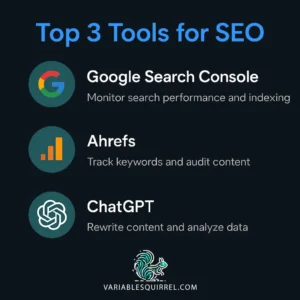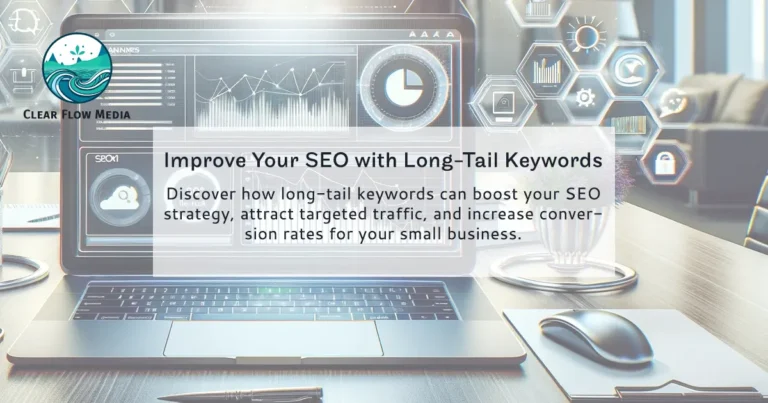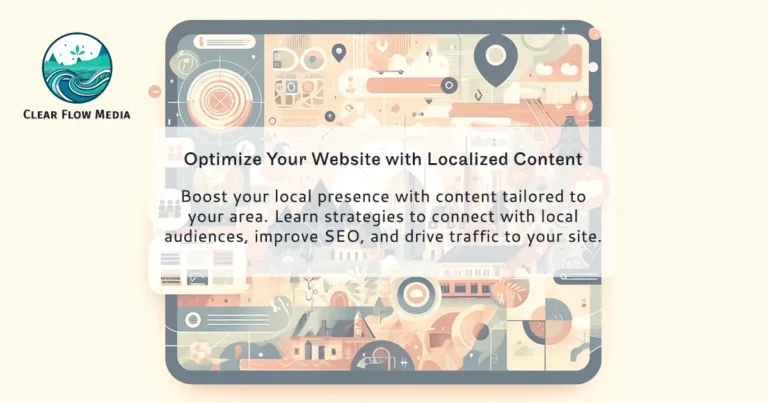SEO for Small Business Websites
Tackling SEO for small business websites can feel overwhelming. There’s a lot of advice out there, and most of it isn’t helpful to businesses targeting a local market or limited niche. The good news is you don’t need a complicated strategy. You just need a solid foundation, a few reliable tools, and a consistent plan.
Whether you’re launching a new website or trying to figure out why traffic has stalled, here’s a practical overview of how SEO works and what steps to take.
What Is SEO?
SEO stands for Search Engine Optimization. It’s the process of improving your website so it appears higher in search results. The higher you appear, the more likely someone is to click on your site.
For local businesses, SEO isn’t about chasing algorithms. It’s about showing up when someone searches for what you offer. That means your content should be clear, relevant, and useful to real people, while also being structured in a way that search engines can understand.
Foundational Content Strategies
The most effective SEO strategies don’t need to be constantly reworked. Set these up early and build from there.
Focused Content
Each page on your website should have a single purpose. If you sell handmade candles, don’t list every scent, product type, and care tip on one page. Break it up. Have a page focused on soy candles, another for candle care, and another for seasonal scents. Focused pages tend to rank better, convert better, and are easier to update later.
Selecting Keywords
Use phrases your customers are actually typing into search. Think about problems and services. Someone might search “gift ideas under $25” or “eco-friendly candles for allergies.” You don’t need trendy language. Just be specific, helpful, and true to how your audience talks.
Beyond Core Content
Good SEO also means taking care of the little things:
These updates make your website easier for people to use and easier for search engines to understand. Alt text helps screen readers describe images to visually impaired visitors. Proper headings and descriptive file names give your content structure and improve indexing. Meta titles and descriptions give search engines a clear summary of what each page is about, which can improve visibility in search results and boost click-through rates.
Top 3 Tools for SEO for Small Business
You don’t need to spend a fortune to do SEO well. These three tools cover everything most businesses need.

- Google Search Console: Track which search terms bring users to your site, see what’s indexed, and get alerts if something breaks. If you don’t have it set up, do that today. Google Search Console (“GSC”) is a free tool offered by Google to all website owners.
- Ahrefs: Great for spotting technical issues, tracking keyword performance, and auditing your content. The free version gives you just enough data to stay on top of things. Ahrefs offers free and paid plans; the free plan offers monthly updates and free website scans to check for errors.
- ChatGPT: Use it to generate outlines or drafts, or to analyze metrics from Google Search Console and Ahrefs. ChatGPT offers free and paid plans.
Reviewing Metrics and Making Decisions
Start Broad, Then Get Specific
When you’re just getting started, your content can be more general. Over time, you’ll see which topics are getting traffic, and that’s when it makes sense to narrow in.
For example, a local interior painting business may begin by writing general guides on foundational topics. After a few months of traffic data, they may notice that posts focusing on choosing the correct color combinations for the room size and use are the most popular. The business’s SEO strategy would include more content on choosing colors, shades, combinations, etc.
It’s important to continue offering general content to find other topics of interest to readers. Search engines prioritize websites with fresh, relevant, and diverse content focused on a niche or industry.
Google Search Console
Where You Stand
Start by checking how many of your website pages have actually been indexed. If Google hasn’t indexed a page, it won’t appear in search results at all.
Total impressions tell you how often your site is shown in search results, giving you a baseline of visibility.
Finally, review your top search queries. These are the actual phrases people typed in before clicking your site. If those queries match your products or services, you’re on the right track. If they don’t, you may need to adjust your content to better reflect what your customers are looking for.
Ahrefs
Fix the Fundamentals
Run a crawl weekly or monthly to stay on top of your site’s technical health. Look for broken links that lead nowhere, since they frustrate users and can hurt your search performance. You should also make sure all of your images have alt text and that every page includes complete meta tags. These details help with both accessibility and indexing.
If your site includes large image files, those can slow down page load times and create a poor experience for mobile users. Resize or compress images where possible, or consider using a modern format like WebP. These types of fixes are quick wins that improve usability and performance.
ChatGPT
Analyze and Optimize
Export your top keywords and high-performing pages from Google Search Console or Ahrefs. Then, use ChatGPT to analyze them. Start by asking it to group related keywords into clusters or categories. This helps identify which topics are already working and which areas are underdeveloped. You can also request new blog title ideas based on your most clicked queries or ask for long-tail keyword suggestions related to your core topics.
ChatGPT can help you spot content gaps, such as products or services you offer but haven’t covered in your blog. It can also help you rework low-performing titles, summarize long articles for repurposing, or brainstorm internal linking opportunities between related content. The goal is to use your existing data to make smarter content decisions going forward.
Using SEO Content Across Platforms
Google Business Profile Posts
Pull one or two sentences from your blog and add a short call-to-action. For example, from a post on candle care: “Keep your candle burning clean with a properly trimmed wick. More care tips on our blog.” Then link to the full post.
Social Media Posts from Blogs
Short-Form Videos from Blogs
Use blog content as a loose script. For example:
All of these help keep your brand active and drive traffic back to your site.
SEO doesn’t have to be mysterious. If you focus on creating quality content, fixing technical issues as they arise, and reviewing your data once a month, you’re already ahead of most.
Keep your content clear, your tools handy, and your updates consistent. That’s all most small business websites need.



